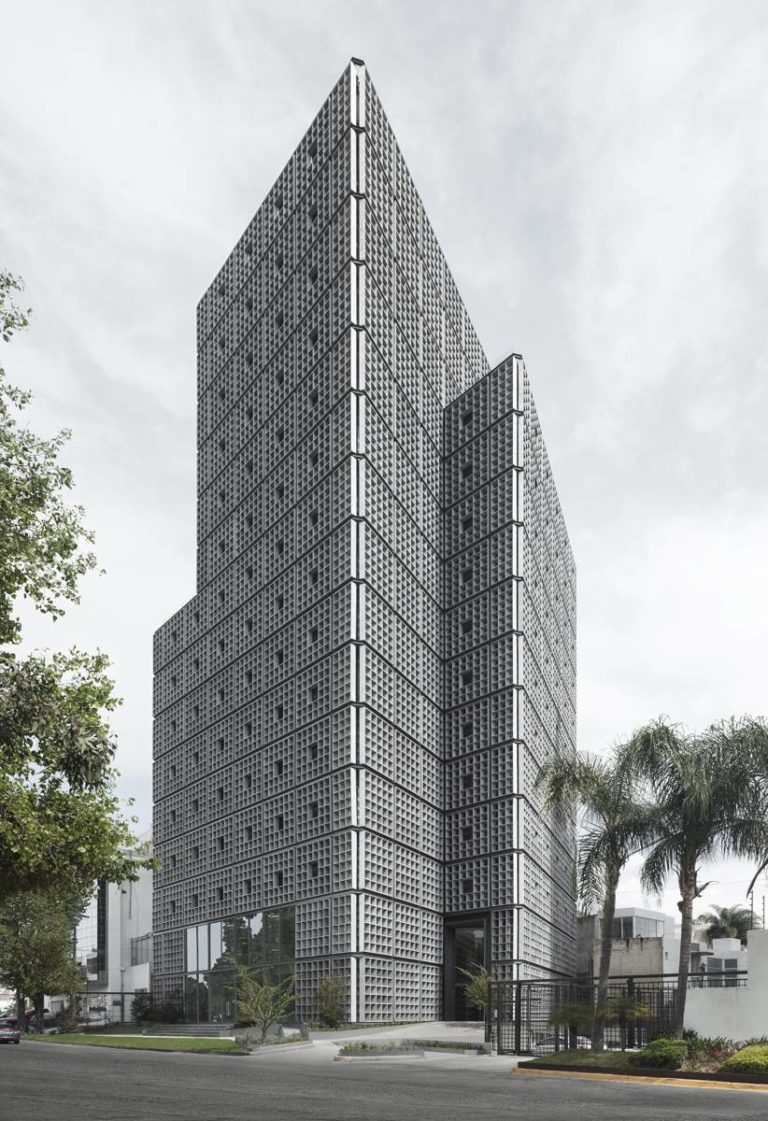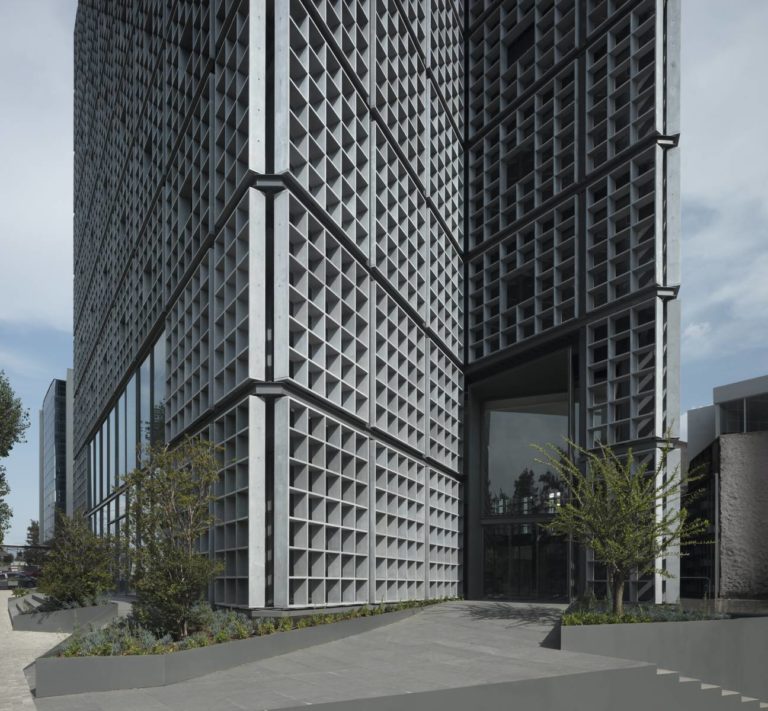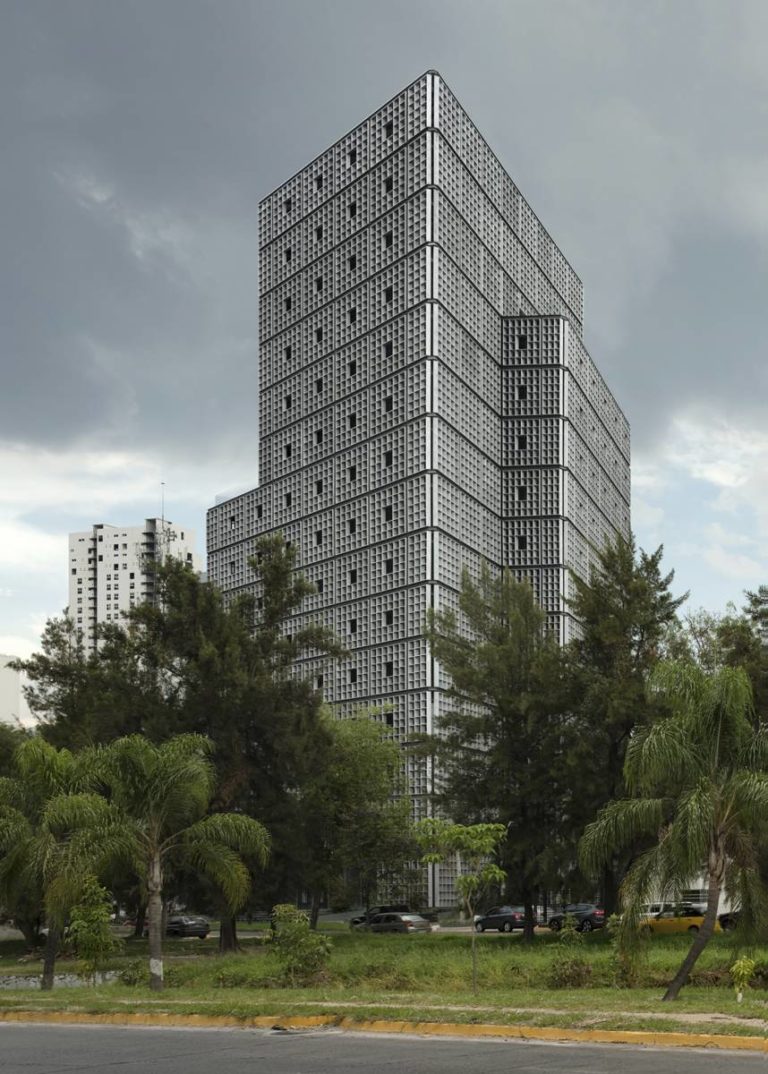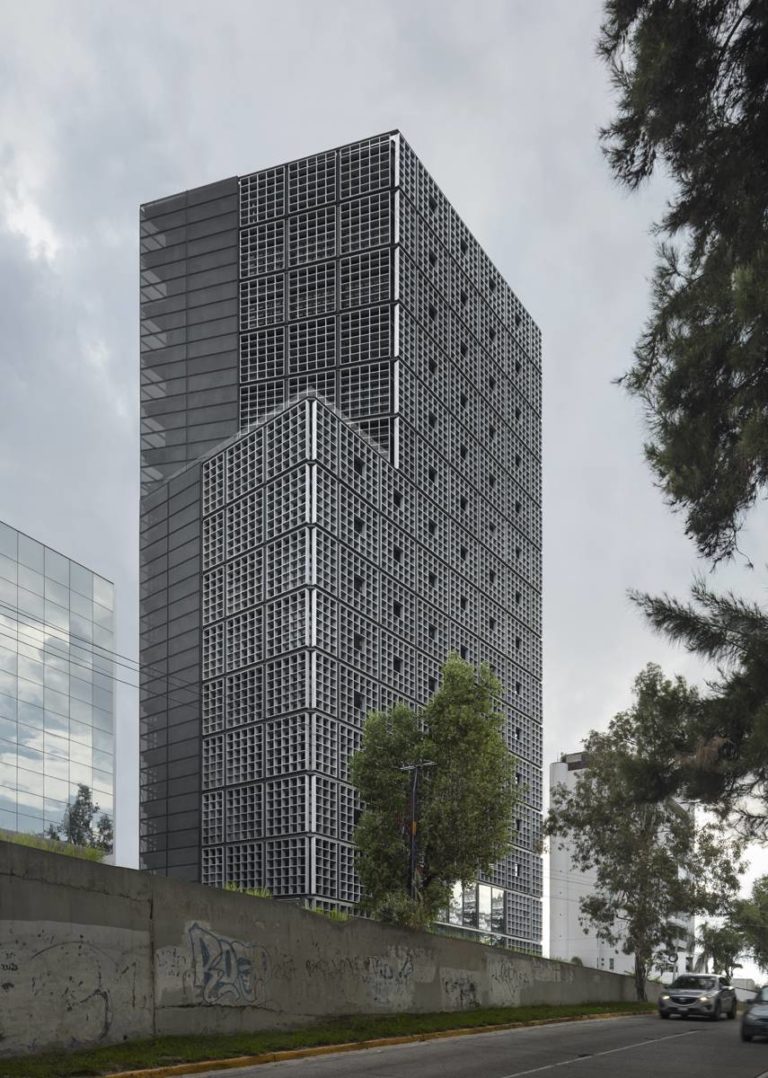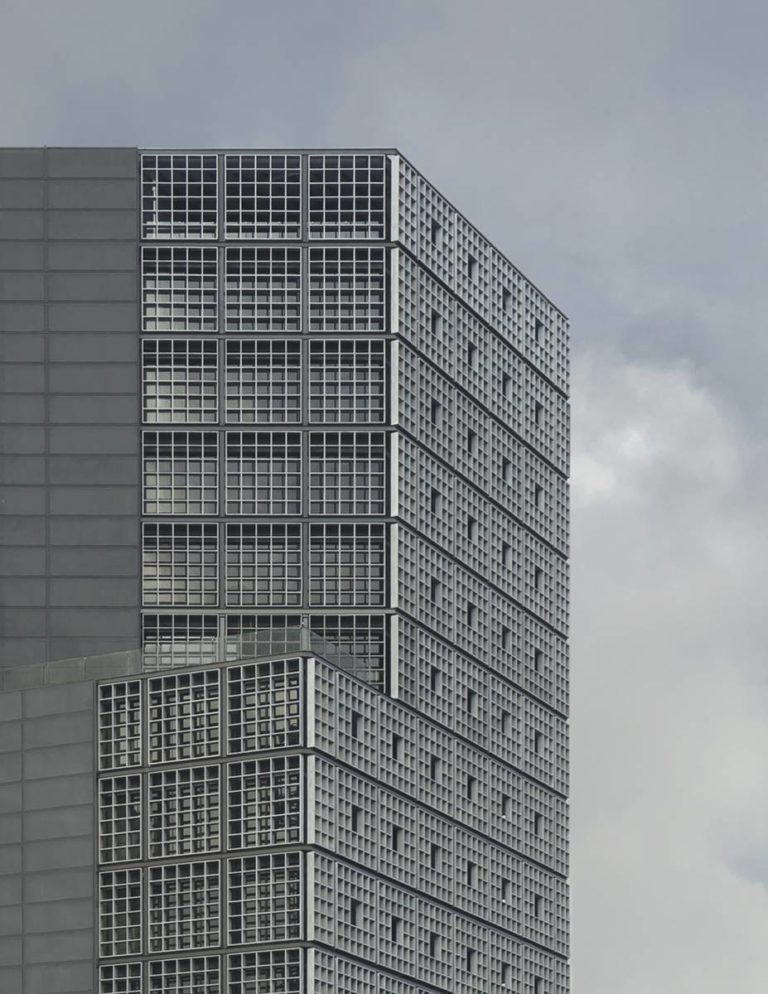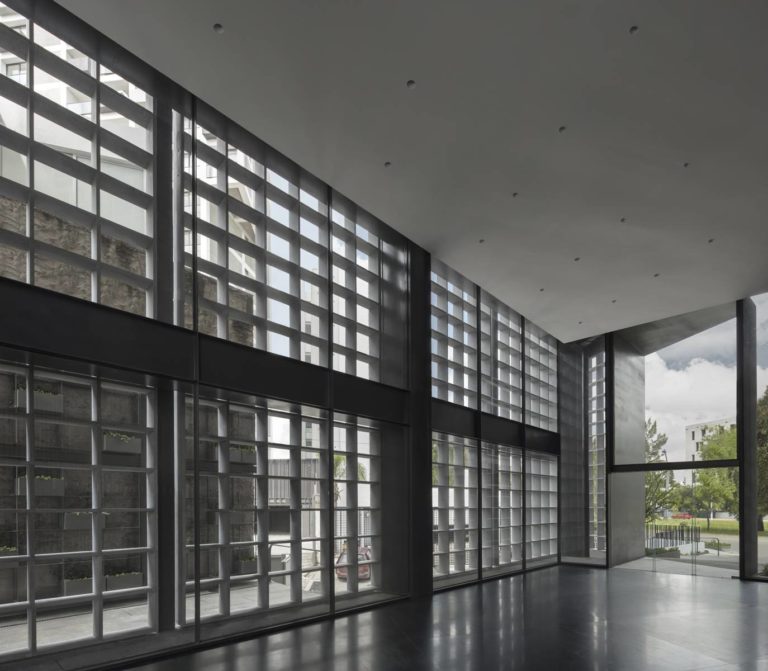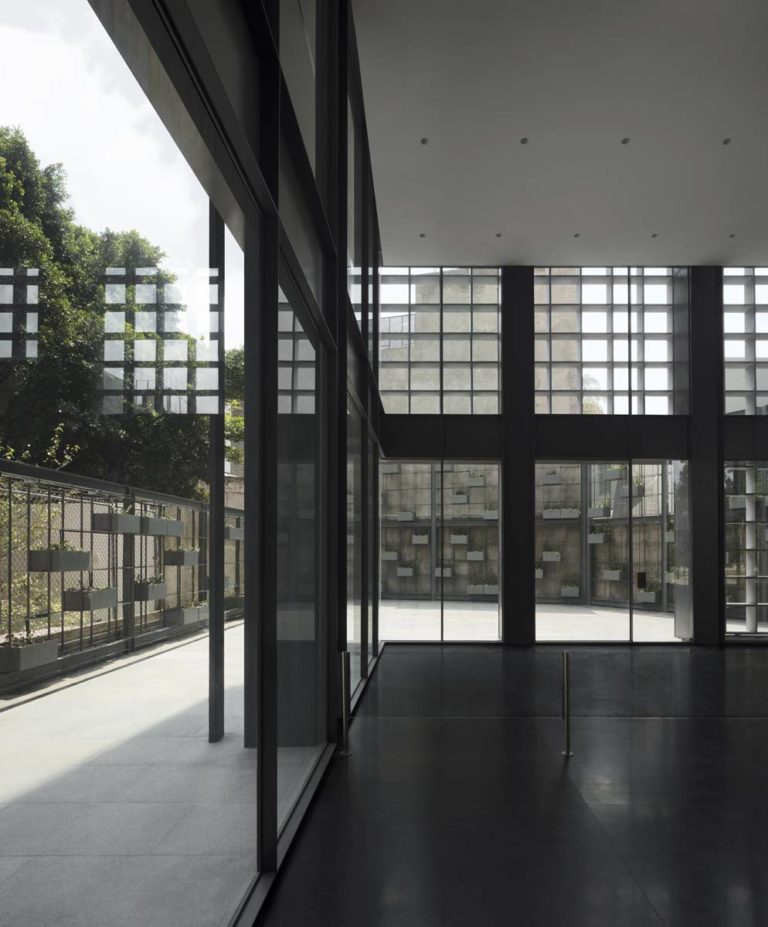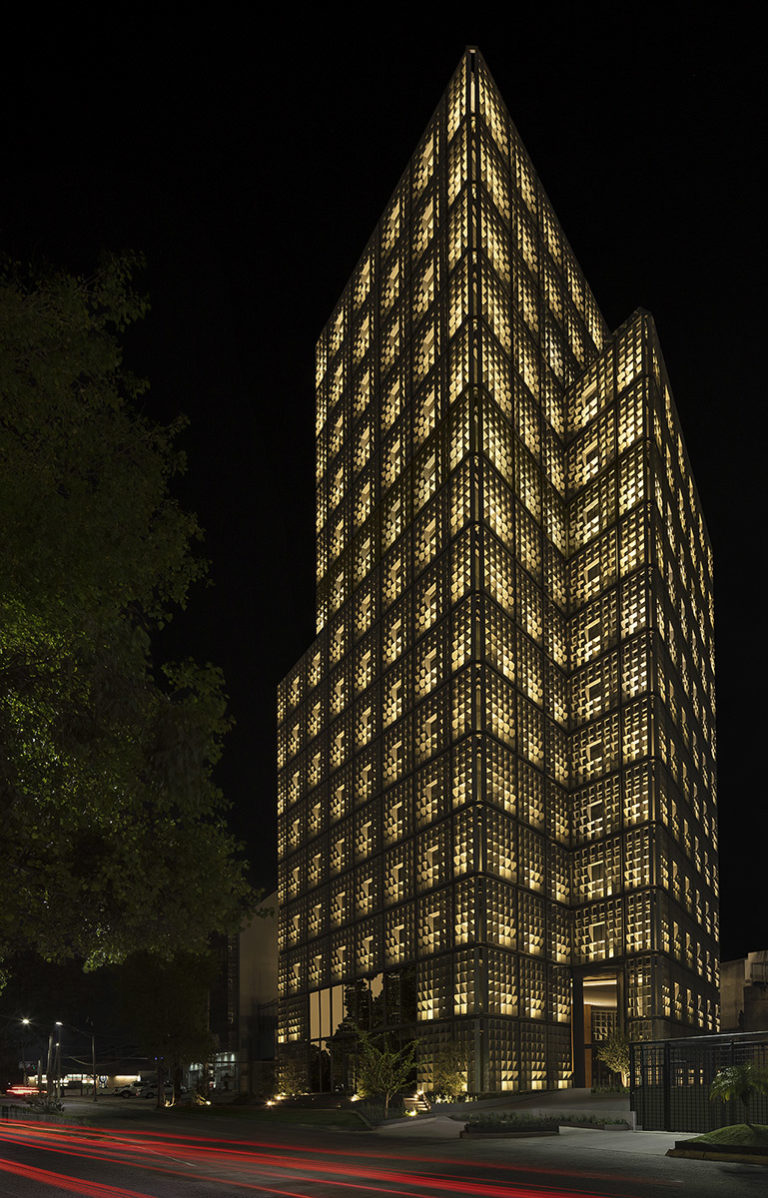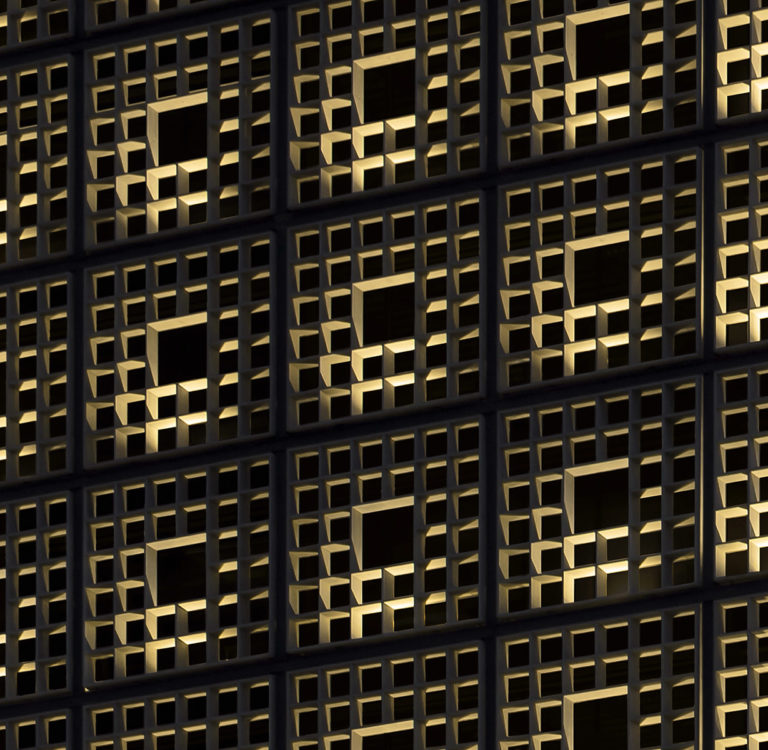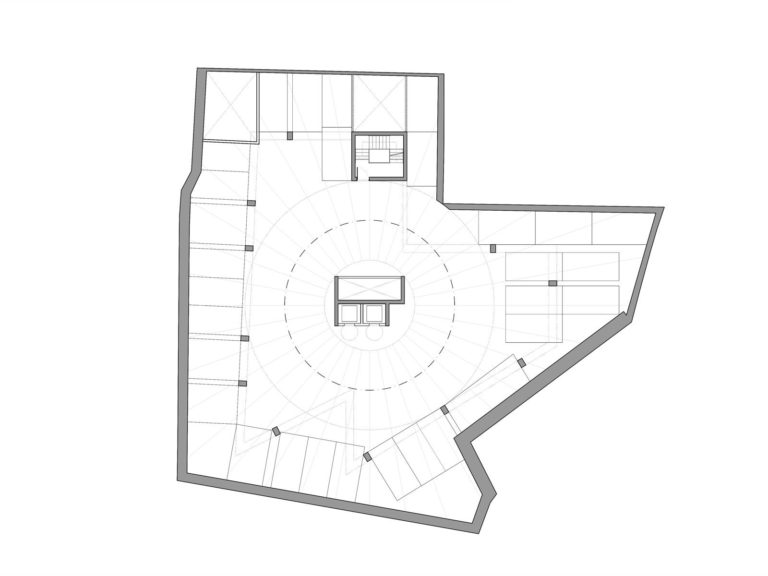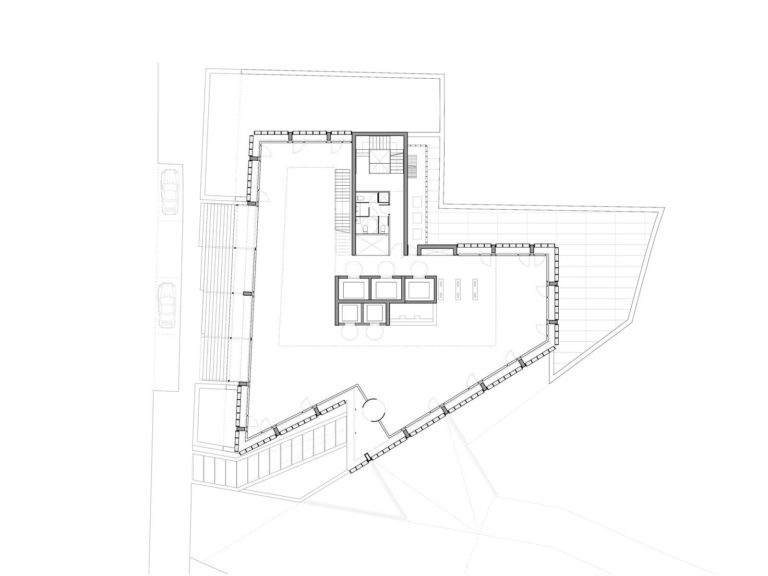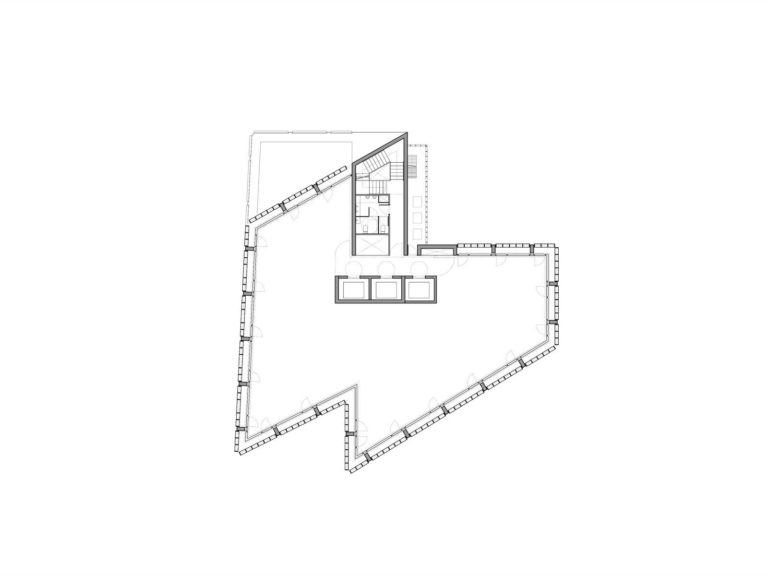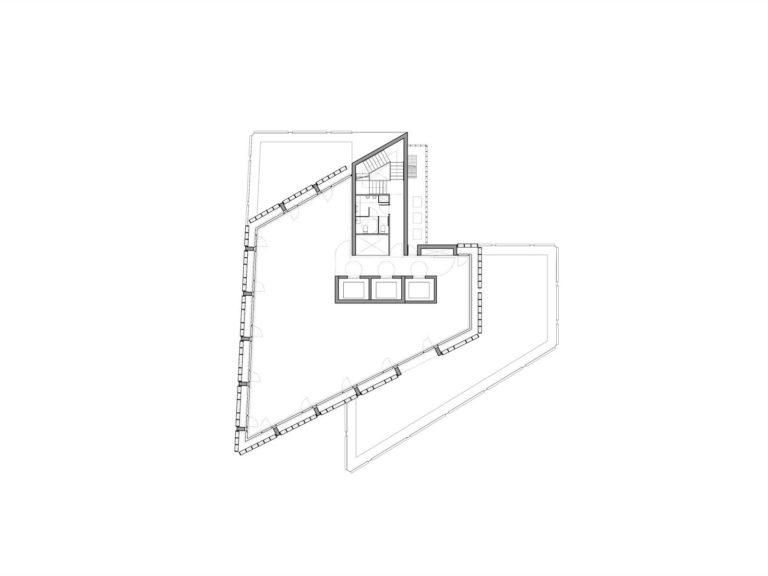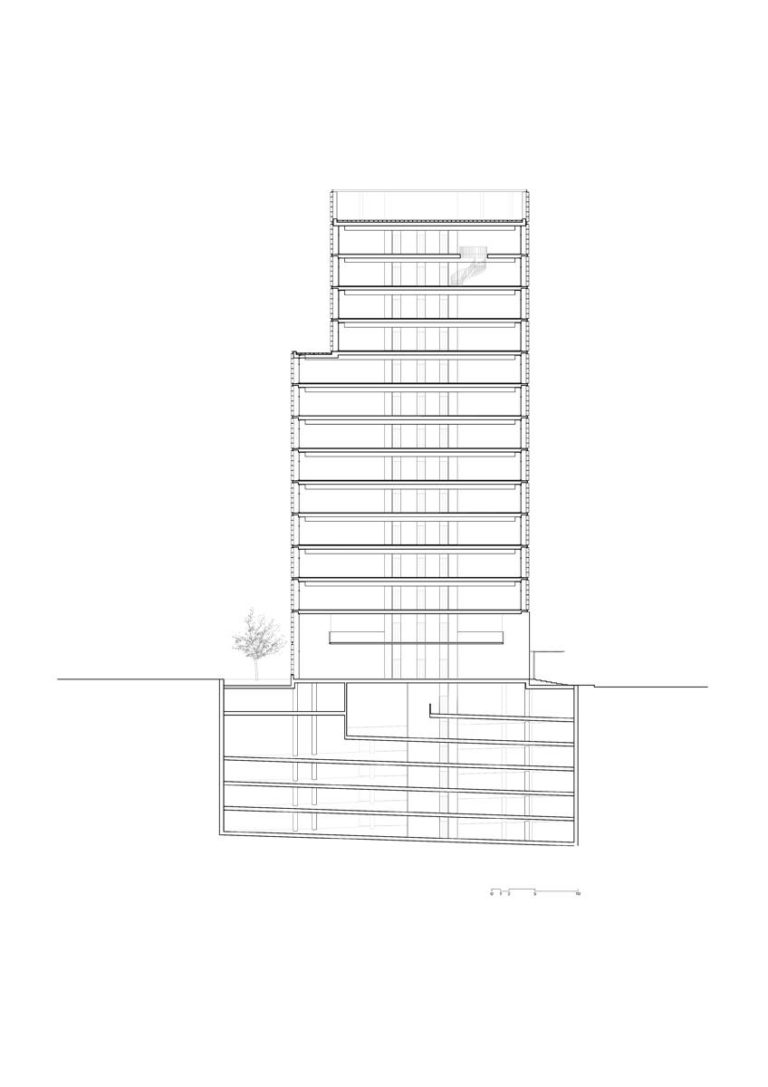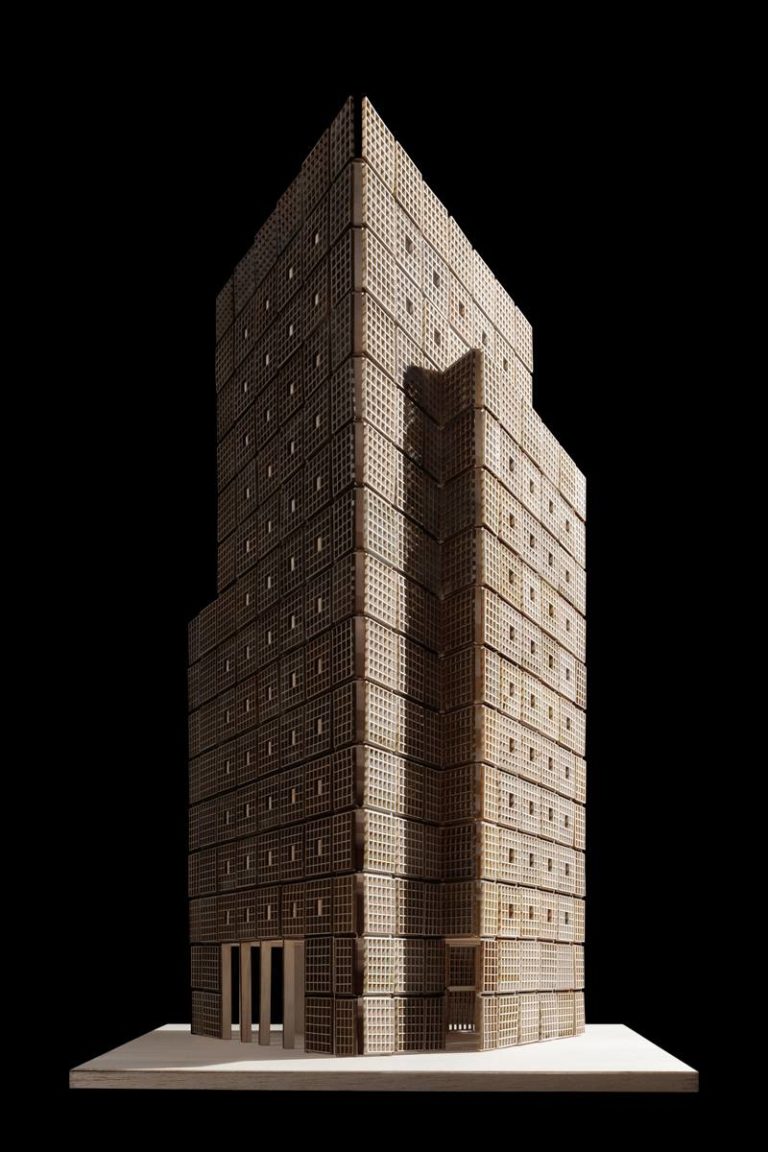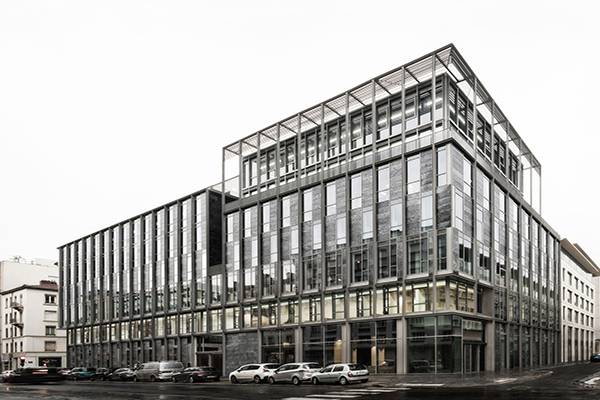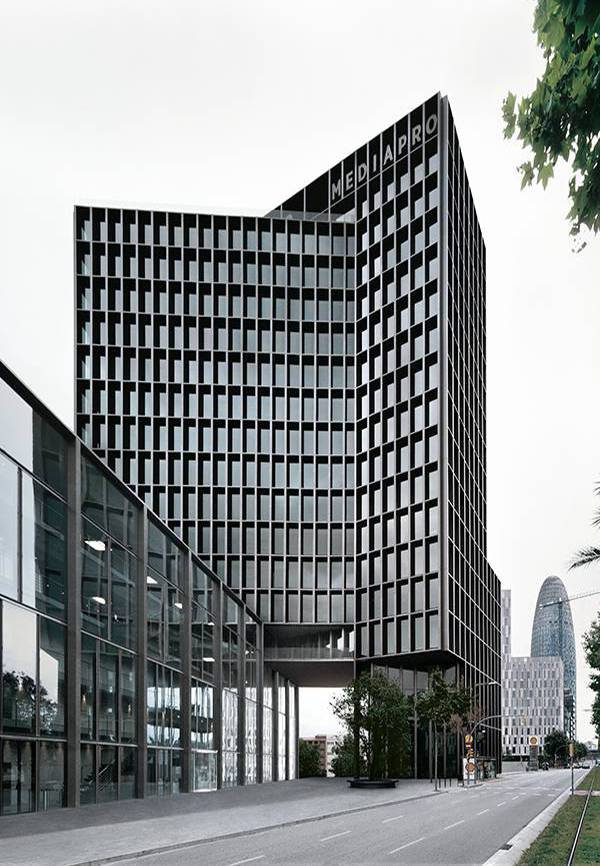Torre Hipódromo
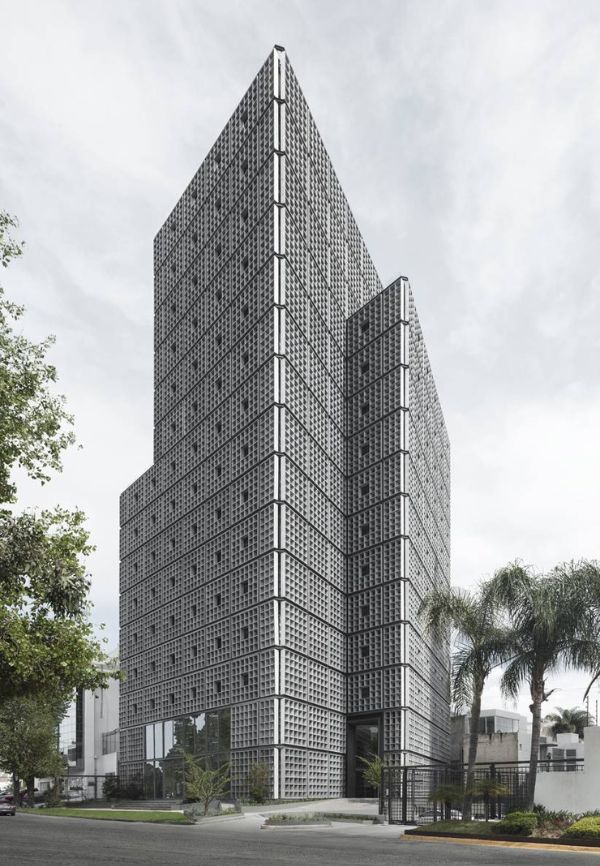
Torre Hipódromo
Architectural Order within Urban Disorder
The Hippodrome Tower in Guadalajara, Mexico(2012-18), by OAB (Office of Architecture in Barcelona), is one of the crowning achievements in Carlos Ferrater’s fifty-plus years of creating architecture;on this occasion together with Xavier Martí,and with the collaboration of Álvaro Berubén. It is an irregular prism that manages to bring order to a growth area of the Jalisco capital, in which there is not onlyan unforeseenmélange of typologies—from single-family houses to tower blocks—but also no extantplan for a hierarchized road system adapted to the marked increase in traffic. The tower stands where the dramatic, unplanned survival of streets and roadways prior to urban growth abound.
This is a golden opportunity, then, for OAB to once again demonstrate its confidence in the capacity of typology, composition and technology to establish urban order. The context of both city and landscape has been the raison d’être of Ferrater’s work from the very first. And when this setting is incapable of providing inspiration,there emerges the order of the architecture itself to establish a reference, a landmark that indicates and enjoys the good orientations and views. In actual fact this is a building primarily conceived in terms of vision: the distant view, with its honest and clear monumentality; the near-to, in the entrance routing which privileges a tactile sense; the vista from the within the building, perfectly framed in the modulating of the openings; and the nocturnal view, with the tower converted into a lantern that emits the light from its geometrically perforated skin, thus creating a pixeled image.
The Ferrater and Martí team have filtered this carryover of OAB’s work to a Latin American context through Brazilian tropical architecture. To be sure, the basis continues to beMies van der Rohe; especially the Mies that was abundantly qualified to respond to the disorder of the setting and the irregularity of the land lot. But here the references to the sensual and tangential trajectories of Oscar Niemeyer are essential in the experience of the entrance; and the influence of the latticework openings or muxarabiof Lucio Costa in the Guinle Park residential complex inRio de Janeiro is seminal in the composition of the façade module. Present, too, is the lightness and monumentality of some of the buildings of Affonso Eduardo Reidy and Carmen Portinho,and of the early Lina Bo Bardi in São Paulo, rooted in a “Gramscian” interpretation of technology and of “Miesian” space.
From a typological point of view this is one stepfurther from the Mediapro headquarters on the Diagonal in Barcelona (2005-2008). Here,the geometric finesse of the structural grid, which is atonce form, composition and façade, is transposed to a far more difficult context, on an irregular plot, which calls for complex assemblies of the structure of fan-shapedfloor slabs. While the entrance in the Mediapro tower was frontal and direct, with little depth, here it is a sequence that is cleanly generated in the setting back and stepping of the volume, in a double-height ground floor, which introduces us, via a transitional feature that is an homage of sorts to Alvaro Siza Vieira, to a platonic, centripetal space that draws its inspiration from Mies’s Seagram Building in New York. Afterkeeping the visitor’s attention at the counter andat the far endwhich houses a battery of three elevatorsthat go up the tower and two that go down to a parking area in spiral form, like the basement of Antoni Gaudí’s La Pedrera in Barcelona, and which contains the restrooms and the stairs, the visitor’s gaze is conducted towards a patio, a lavish affair of space, light and vegetation. In this way the body of whosoever entershas to turn in the opposite direction, as in the Rio de Janeiro Ministry of Culture by Oscar Niemeyer’s team, in order to accede, in the pinched passagewaybehind the counter, to the space thatleads to the vertical accesses.
This confidence in geometry culminates in the composition of the modulation of the openings of the façade. Once again, in true rationalist fashion, all the complexity is resolved in the apparent simplicity of a modulation that also refers us to Pierre Chareau and the interior façade of the Maison de Verrein Paris; and expresses in its form the desired order of a symmetrical floor plan. One arrives at afelicitous composition of the façades, which is enjoyed from the interior “sandwich space,” as Colin Rowedescribed it. Notonly are the views framed in the modulationand a cinematic space isfostered, panoramic camera-style, but a minimal balcony area is created on the façade for the human figure, an interstice that draws on Japanese in-between spaces. This is like a vertical tatami,square and squared, of six modules, with an opening in the center which occupies the four middle ones. A rich final result to the search for the lightweight component of prefabricated concreteof GRC, calculated as an element of an anti-seismic structure. An insertable component which would metaphorically signify the keystone of the vault, which will permit the assembly of each component in a totalbuilding: from the modulated openings to the stepped, pivoted form of the tower. And which enhance the essential detail of a corner resolved by negating theleading edge, because of the absence of the sharp point and the presence of the empty space.
To sum up, a lesson in maturity which rises not very far fromthe urban environment in which the Luis Barragáns, Ignacio Díaz Moraleses, Rafael Urzúas and Pedro Castellanoses of the Tapatía School began experimenting at one time.Today, with another architecture, ultra-contemporary and of a different school, similar ritual, spatial and sensual itineraries are seen to those inBarragán’s work, with its systole and diastole, contradictions and spatial openings, and with itsviewpoints, ever framed towards the surroundings, seeking the composition and modulation of the paintings of the Renaissance.
Josep Maria Montaner
